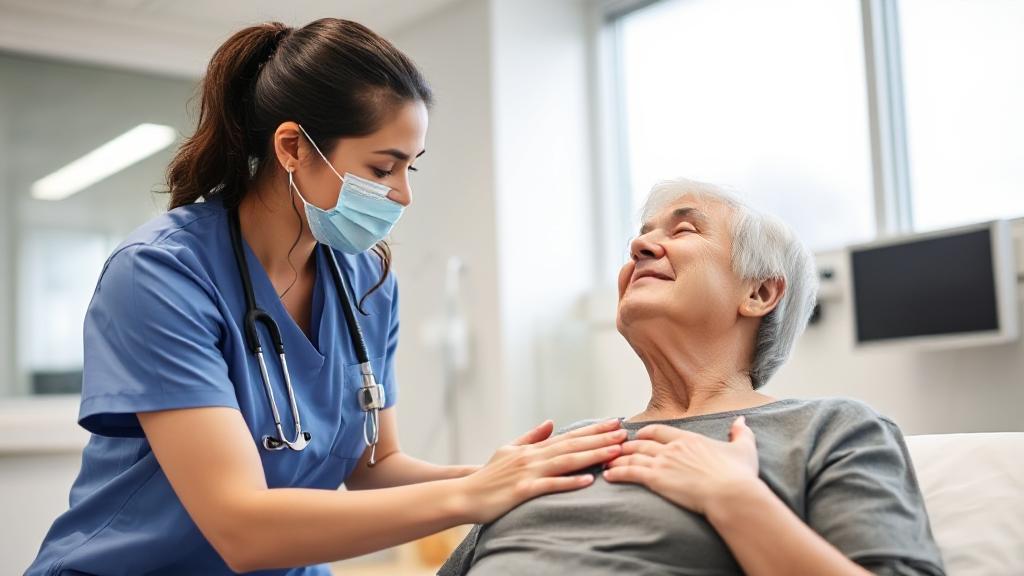Introduction
Respiratory therapists (RTs) play a crucial role in the healthcare system, providing specialized care for patients with breathing or cardiopulmonary disorders. As specialists in respiratory care, they work alongside doctors and nurses to ensure patients receive comprehensive treatment. Their expertise is vital in various healthcare settings, from emergency rooms to long-term care facilities.
Education and Certification
To become a respiratory therapist, one must complete:
- An accredited respiratory therapy program (associate's or bachelor's degree)
- The National Board for Respiratory Care (NBRC) certification exams
- State licensure requirements
- Ongoing continuing education to maintain credentials
For more information on certification, visit the NBRC website.
Key Responsibilities
Patient Assessment
RTs conduct thorough evaluations of patients' cardiopulmonary status by:
- Measuring vital signs
- Performing physical examinations
- Analyzing blood gases
- Conducting pulmonary function tests
- Interpreting chest X-rays
Treatment Administration
Respiratory therapists are responsible for administering various treatments, including:
Oxygen Therapy
- Setting up and monitoring oxygen delivery systems
- Adjusting flow rates based on patient needs
- Managing compressed gas cylinders
Mechanical Ventilation
Medication Administration
- Bronchodilators
- Anti-inflammatory drugs
- Mucolytics
- Antibiotics (via nebulizer)
Critical Care
In intensive care units, RTs manage:
- Advanced life support systems
- Complex ventilator cases
- Emergency response situations
- Extracorporeal membrane oxygenation (ECMO)
Specialized Areas
Neonatal Care
RTs working in neonatal units provide specialized care for premature infants and newborns with respiratory difficulties. Learn more about neonatal respiratory care.
Sleep Medicine
Many respiratory therapists work in sleep laboratories, helping diagnose and treat sleep-related breathing disorders like sleep apnea.
Pulmonary Rehabilitation
RTs design and implement exercise programs for patients with chronic respiratory conditions such as:
- COPD
- Asthma
- Cystic fibrosis
- Pulmonary fibrosis
Patient Education
"Patient education is crucial for successful long-term management of respiratory conditions and prevention of complications."
RTs teach patients and their families about:
- Proper inhaler technique
- Breathing exercises
- Smoking cessation
- Disease management
- Prevention strategies
Work Environment
Respiratory therapists work in various settings, including:
- Hospitals
- Clinics
- Home health agencies
- Skilled nursing facilities
- Sleep laboratories
- Educational institutions
The work environment can be fast-paced and demanding, especially in critical care units where they may be involved in life-saving interventions. The use of personal protective equipment (PPE) is often necessary to prevent the transmission of infectious diseases.
Career Outlook and Professional Development
The demand for respiratory therapists continues to grow, with the Bureau of Labor Statistics projecting a faster-than-average growth rate. Factors contributing to this growth include:
- Aging population
- Increased prevalence of respiratory conditions
- Advanced medical technologies
- Growing awareness of respiratory health
To stay current with evolving medical practices, RTs should:
- Attend professional conferences
- Participate in research studies
- Join professional organizations like the American Association for Respiratory Care (AARC)
- Read current medical literature
- Pursue advanced certifications
Emerging Technologies
Modern respiratory therapy increasingly involves:
- Telemedicine platforms
- Electronic medical records
- Advanced monitoring systems
- Smart inhalers
- Artificial intelligence applications
The role of a respiratory therapist is both challenging and rewarding, requiring a unique combination of technical expertise, clinical knowledge, and compassionate care. As healthcare continues to evolve, RTs remain essential members of the medical team, helping patients breathe easier and live better lives.
